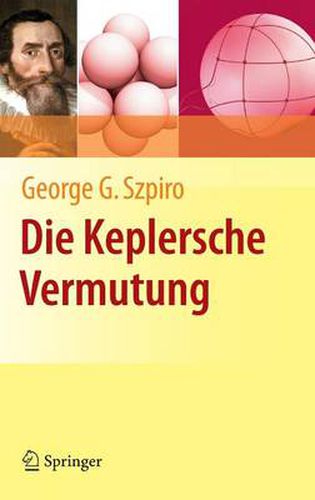Readings Newsletter
Become a Readings Member to make your shopping experience even easier.
Sign in or sign up for free!
You’re not far away from qualifying for FREE standard shipping within Australia
You’ve qualified for FREE standard shipping within Australia
The cart is loading…






This title is printed to order. This book may have been self-published. If so, we cannot guarantee the quality of the content. In the main most books will have gone through the editing process however some may not. We therefore suggest that you be aware of this before ordering this book. If in doubt check either the author or publisher’s details as we are unable to accept any returns unless they are faulty. Please contact us if you have any questions.
Sir Walter Raleigh wollte wissen, wie Kanonenkugeln in einem Schiff am dichtesten gestapelt werden koennen. Der Astronom Johannes Kepler lieferte im Jahr 1611 die Antwort: genau so, wie Gemusehandler ihre Orangen und Tomaten aufstapeln. Noch war dies lediglich eine Vermutung - erst 1998 gelang dem amerikanischen Mathematiker Thomas Hales mit Hilfe von Computern der mathematische Beweis. Einer der besten Autoren fur popularwissenschaftliche Mathematik beschreibt auf faszinierende Art und Weise ein beruhmtes mathematisches Problem und dessen Loesung.
$9.00 standard shipping within Australia
FREE standard shipping within Australia for orders over $100.00
Express & International shipping calculated at checkout
This title is printed to order. This book may have been self-published. If so, we cannot guarantee the quality of the content. In the main most books will have gone through the editing process however some may not. We therefore suggest that you be aware of this before ordering this book. If in doubt check either the author or publisher’s details as we are unable to accept any returns unless they are faulty. Please contact us if you have any questions.
Sir Walter Raleigh wollte wissen, wie Kanonenkugeln in einem Schiff am dichtesten gestapelt werden koennen. Der Astronom Johannes Kepler lieferte im Jahr 1611 die Antwort: genau so, wie Gemusehandler ihre Orangen und Tomaten aufstapeln. Noch war dies lediglich eine Vermutung - erst 1998 gelang dem amerikanischen Mathematiker Thomas Hales mit Hilfe von Computern der mathematische Beweis. Einer der besten Autoren fur popularwissenschaftliche Mathematik beschreibt auf faszinierende Art und Weise ein beruhmtes mathematisches Problem und dessen Loesung.